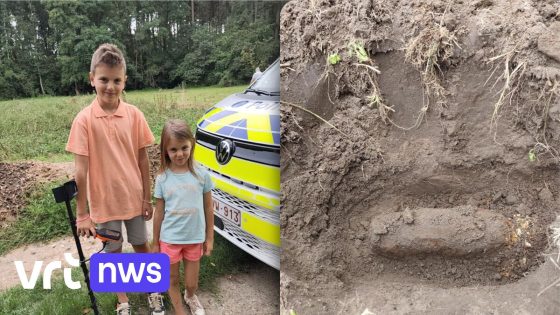Ferre and Febe made a startling discovery with their metal detector in a grassy field in Wolfsdonk—a live shell. The children’s device suddenly gave a clear beep on 2025-08-11 13:41:00, prompting them to start digging. Their mother, Karen Naulaerts, joined in but stopped when she realized the object resembled a long bomb and decided to proceed with caution.
- Ferre and Febe found bomb with metal detector
- Karen Naulaerts stopped digging for safety
- Police alerted and secured bomb location
- DOVO assessed bomb as non-urgent threat
- Bomb disposal scheduled within one or two days
- Unknown bomb type and historical period
Karen immediately alerted the police, who arrived promptly and cordoned off the area. Authorities documented the find and sent photos to the bomb disposal unit Dovo. Fortunately, Dovo assessed the situation and determined the shell was not an immediate danger. Plans are in place to safely neutralize the ordnance within the next day or two.
What kind of bomb is this, and how long has it been buried in Wolfsdonk? These questions remain unanswered, but the swift response highlights the importance of vigilance in Belgium’s historically rich regions. Let’s explore what this discovery means for locals and safety precautions moving forward.
Why do these old explosives still surface in Belgium? The country’s turbulent history, especially from world wars, leaves many hidden dangers beneath the surface. This incident raises key points for residents and visitors alike:
- Metal detecting can uncover dangerous wartime ordnance.
- Immediate reporting to authorities is crucial for safety.
- Dovo’s expertise ensures controlled disposal of such threats.
- Public awareness helps prevent accidents in historically affected areas.
As authorities prepare to neutralize the shell, this event serves as a reminder to stay alert and report suspicious finds immediately. Could increased public education reduce risks further? Only time will tell, but vigilance remains key for Belgian communities.





























